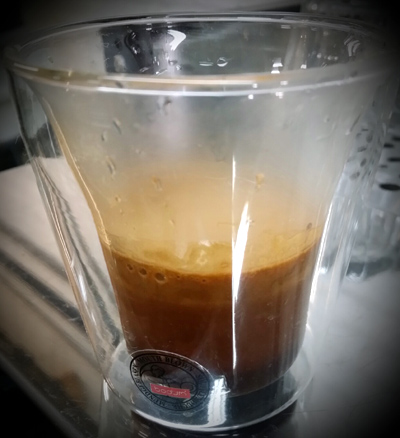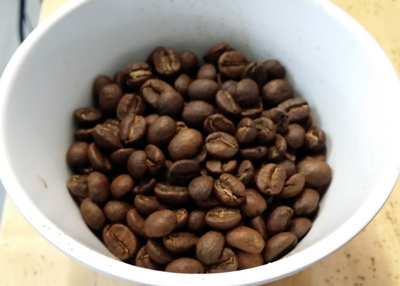by Luigi Odello
Secretary General of the International Institute of Coffee Tasters, he is also a lecturer at the University of Udine, Verona and at the Cattolica in Piacenza. In addition he is the Chairman of the Taster Study Center and Secretary General of the Italian Espresso National Institute
 The coffee production cycle is long and, especially, all too often there is no contact between the various stages: whoever harvests the beans in the tropical countries rarely has an idea of how they will be processed and of the expectations of the final consumer.
The coffee production cycle is long and, especially, all too often there is no contact between the various stages: whoever harvests the beans in the tropical countries rarely has an idea of how they will be processed and of the expectations of the final consumer.
We want to focus on this last element in that coffee, a successful one, in the future must be able to satisfy the desires of the consumers. It must be said that satisfying expectations is something that goes from the ritual modality to the place where you drink coffee. Having said this, the most important aspect is sensory trends.
Resorting to the ten points identified by the Taster Study Centre, we can try and define the profile of the winning coffee.
Increase in the number of taste-aware people
In future we will have more and more time availability and a part of this will lead to an increase in the number of taste-aware people. The sort of people who attend courses to regain their ability to make autonomous choices through an effective use of sense organs. We can see this trend already: just come to think about the 5.000 people who attended the courses of the International Institute of Coffee Tasters. The increase of such people will, as a consequence, bring about a more demanding research for the satisfaction of the pleasure that can come from coffee. Ultimately, this will mean that people will point out to each other the good and bad products available on the market. The quality-minded companies will have a certain alley, all the others will be penalised.
Evolution of the analytical approach to taste
The increasing conviction of the inability to have a role in handling the major social issues will lead individuals to create for themselves some micro cosmos where they can find self-confidence, self-satisfaction and, in general, rewards. The small pleasures in life will become increasingly important and coffee is, undoubtedly, one of these. Greater attention will be devoted to the quality of what we drink and people will want to match taste and knowledge so that they can boast their specific competence.
Decline of gender differences
Males and females will be more and more similar in terms of tastes and, ultimately, of consumption. Coffee will become a way of getting together and the places where to drink it will become a sort of a stage of social life. This will be the background against which new rituals and sensory experiences will be sought for.
Looking for the lost sensory experience
We do not know to what extent this is true but many people say that coffee no longer has the aroma it used to, that intense and varied smell that you could find everywhere inside the bar. The diffusion of consumption systems that pay less attention to the olfactory quality – take automatic machines – and of a certain type of blends for home use – where, when you are lucky, only the aroma of roasted beans dominates – have deprived the consumer of an effective offer to a demand which, probably, has its origins in our genes. Well, the future will be characterised by a wealth of individuals looking for these sensory experiences.
Back to genuine aromas
Power, perfection, deepness: these are the three distinguishing qualities of an excellent cup of coffee. The Italian espresso owes a bit of its international success to these expectations of the consumer, even if they are unconscious. It is a strong sum of aromas and, when these are good, they are at the heart of a sublime moment of sensory satisfaction.
The preparation method is important because it can extract the very best from a blend but there is always the other face of the coin: if the blend is of poor quality, the negative sides of it will be even more noticeable compared with extracting via softer methods (e.g. filter and moka pot).
The return to genuine aromas will also reduce the trend to some experiences, such as aromatisation of coffee, whilst producing an increase of traditional matches, i.e. with milk or, in some cultures, with distillates.
The floral goes universal
Floral is the smell of life itself and is climbing the stairs of appreciation. In the coffee it finds its best expression in the varieties ripened at high altitudes – where the difference in temperature between day and night is sharper – subject to wet processing and then left for fermentation in pure and fresh waters. The not-too-strongly-roasted blends which have high quantities of the floral aroma will benefit from this and the same goes for consumption of pure varieties, single-origins which are becoming increasingly popular in Italy.
Decline of the fruity
The fruity aroma is one of the big favourites in that it is a promise of easily absorbable energy sources. Over time, in the industrial economies, it has been widely used to make products such as drugs more pleasant, hence being associated to negative things. In the coffee it almost always goes hand in hand with the floral and it is less strong than other sensations, consequently it will have no influence on consumption.
Cultural contaminations
Globalisation will produce a parallel and transversal flattening off of different consumption methods. If, till yesterday, Italy drank espresso and the US the filter coffee, already now, but especially tomorrow, the Americans will want espresso and Italians will be looking for other preparation methods. The segmentation between the various types will happen depending on the time of day: a long coffee for the morning, might be a single-origin, an espresso at the mid-morning break, a moka after lunch, for example.
The popularity of machines that are fed with coffee in beans, making it possible to have different preparations, will support this trend. And coffee will become more and more a ritual and always less of a habit.
Looking for softness
The world needs caresses. Therefore, from a tactile point of view, the coffee will be required to be more and more silky and absolutely astringent. The Italian espresso prepared with good-quality blends will be better positioned because it will have body, it will be syrup-like and creamy. Beverages such as cappuccino, which due to their nature have a remarkable tactile tenderness, will be rewarded. And with cream being criticised because of health issues, it will be up to traditional genuine beverages to satisfy the need for softness.
Looking for sensory consistency
Even if the consumer is not an expert taster, her/his subconscious verifies the level of consistency between the perceptions given by the various sense organs or between the perceptions of a different nature given by the same sense. In the coffee, the floral/fruity must keep a certain relationship with the roasted/spicy, the acidity with the bitterness, the bitterness and the roasted note with the colour of the creamy froth. From a coffee prepared with filter or moka, nobody expects neither the creamy froth nor the syrup-like touch, while for an espresso this is of paramount importance. And you name it.
Final observations
To wrap up, the coffee for the future will be the type of coffee capable of satisfying both taste and knowledge, the ritual moments and the needs of the life torn between increasingly hectic working styles and the desire to enjoy leisure time and, especially, through the little pleasures and the time we devote to ourselves. For coffee, if satisfactory from a sensory point of view, we can imagine what follows:
-
a new interest in single-origin varieties;
-
increase in consumption of coffee in beans both at home and at the workplace thanks to the new machines which make it possible to immediately grind coffee and prepare different types of it;
-
greater use of single-dose coffee both at home and at the workplace;
-
survival of traditional methods, e.g. the moka pot in Italy, which leave margins for a remarkable rituality and enable an adequate use of single-origin varieties;
-
growth of Italian espresso in the world.





 If the glass influences the perceived characteristics of a wine, this is three times truer for the cup in that it influences not only the way in which the senses approach the beverage but also the physical status of the beverage itself: the temperature and the way in which the components of the cream surface. All these aspects have been kept into account during the experimentation to which the Tasters Study Centre has participated for the part on sensory analysis while Forever has dealt with technical issues. The New Taster Cup has been designed to optimise its performance in all stages of its use, not only from the point of view of tasting but also to support the barista in preparing a perfect espresso.
If the glass influences the perceived characteristics of a wine, this is three times truer for the cup in that it influences not only the way in which the senses approach the beverage but also the physical status of the beverage itself: the temperature and the way in which the components of the cream surface. All these aspects have been kept into account during the experimentation to which the Tasters Study Centre has participated for the part on sensory analysis while Forever has dealt with technical issues. The New Taster Cup has been designed to optimise its performance in all stages of its use, not only from the point of view of tasting but also to support the barista in preparing a perfect espresso. The coffee production cycle is long and, especially, all too often there is no contact between the various stages: whoever harvests the beans in the tropical countries rarely has an idea of how they will be processed and of the expectations of the final consumer.
The coffee production cycle is long and, especially, all too often there is no contact between the various stages: whoever harvests the beans in the tropical countries rarely has an idea of how they will be processed and of the expectations of the final consumer.
